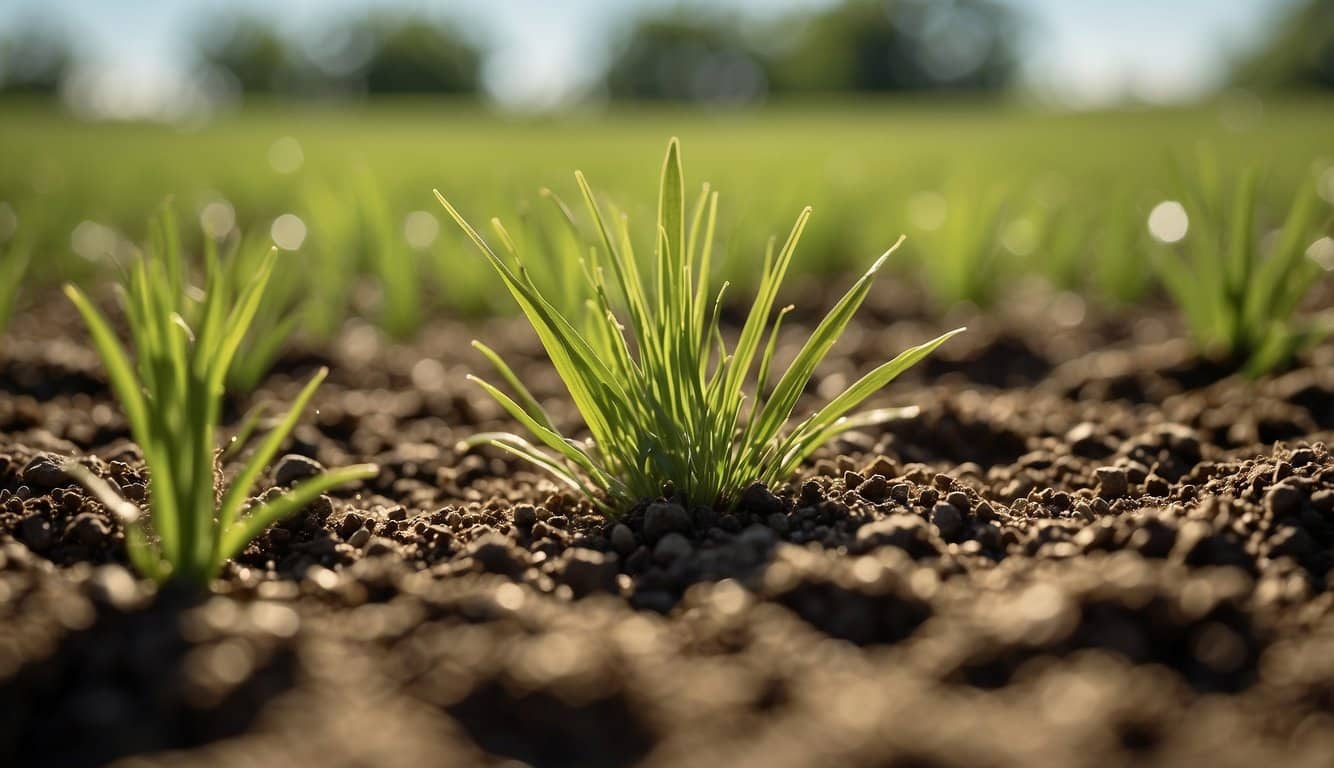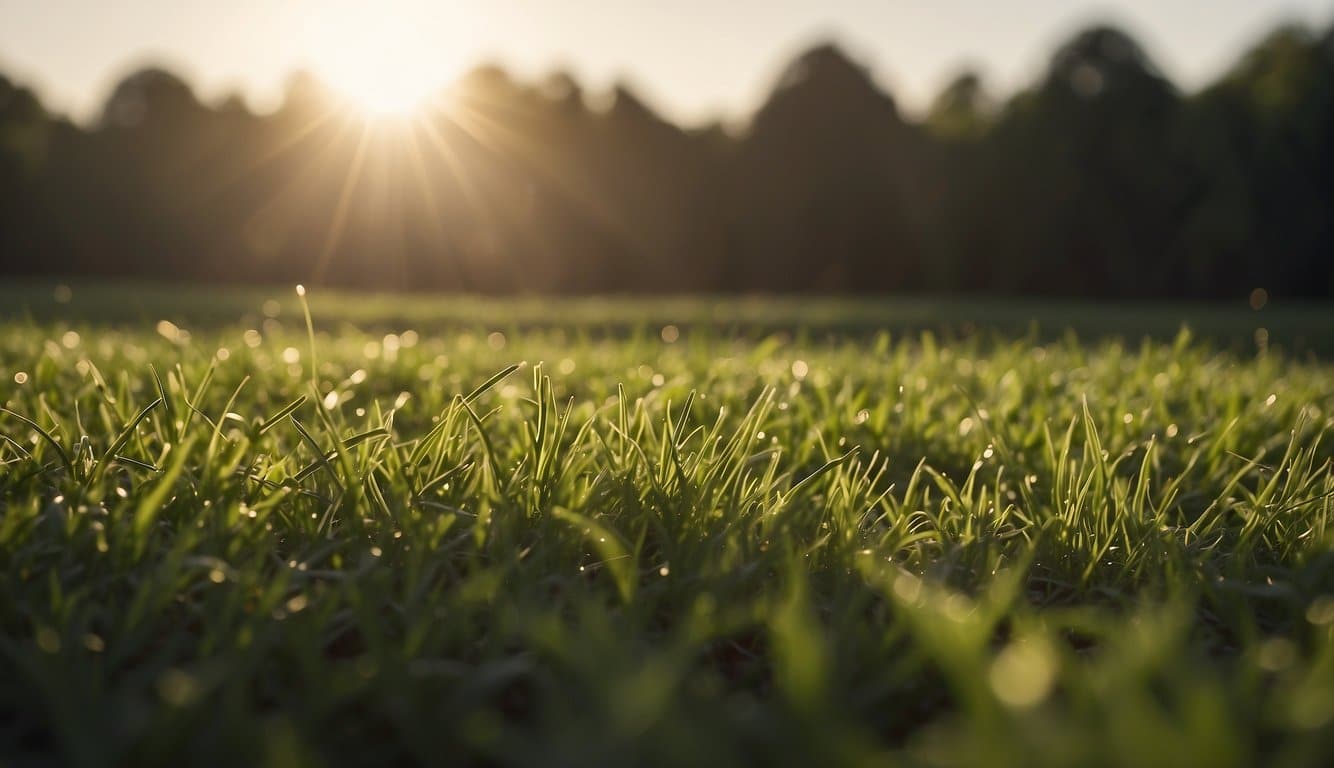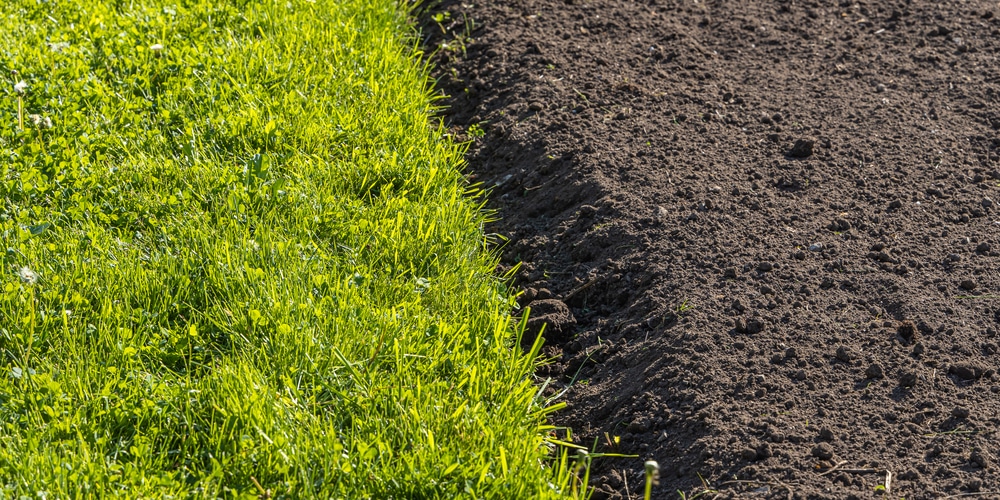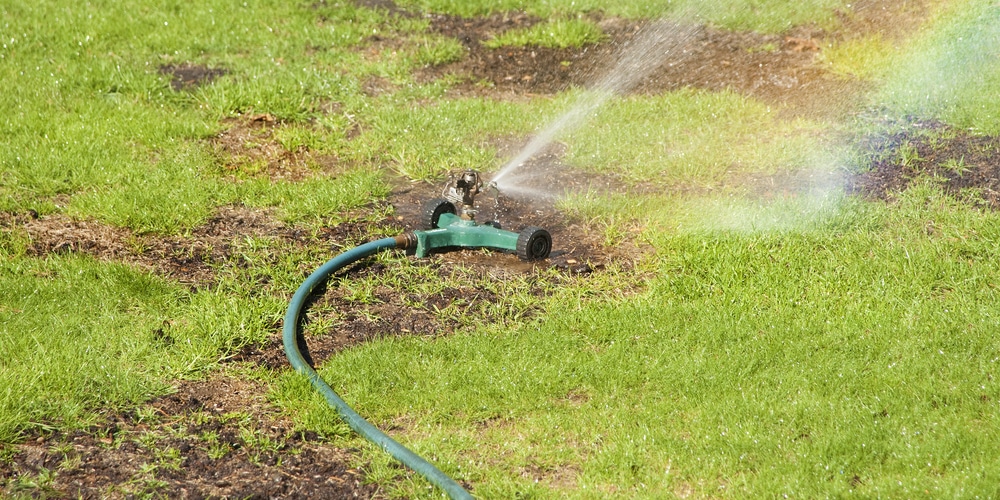| Question | When to Plant Grass Seed in Iowa? |
|---|---|
| Answer | Early fall (late August to mid-September) and late spring (mid-April to early May). |
| More Info |
|
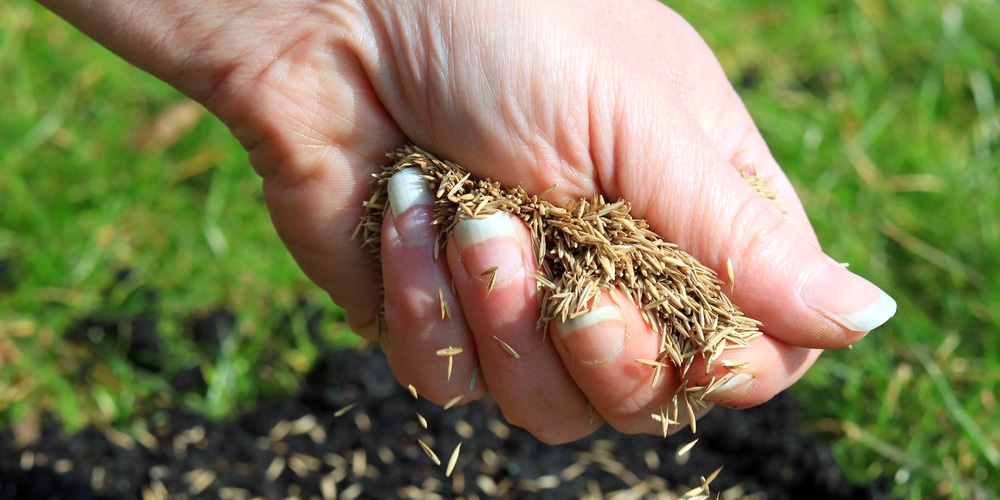
In Iowa, the ideal times for planting grass seed are primarily in early fall and, secondarily, in late spring. The best period for fall planting is from late August to mid-September.
This timing allows grass seeds to germinate and establish a robust root system before the onset of winter, taking advantage of cooler temperatures and typically adequate rainfall.
Spring planting can be done from mid-April to early May, after the danger of frost has passed and soil temperatures are consistently above 50°F. While spring offers a good opportunity for seeding, especially for repairing winter damage, fall is generally preferred for its more favorable growing conditions and reduced weed competition.
Grass Seed Types and Conditions
Iowa’s climate poses unique challenges and opportunities for lawn enthusiasts when it comes to selecting and planting grass seed. The state experiences a cool-season climate, ideal for grasses that thrive in cooler temperatures.
When homeowners in Iowa consider planting grass seed, they must prioritize cool-season grass varieties such as Kentucky bluegrass, perennial ryegrass, fine fescue, and tall fescue. These species are well-suited to the temperature fluctuations of the region, offering durability through cold winters and the ability to rejuvenate come spring.
Timing is crucial for successful seed germination. For optimal growth, planting should occur between late summer and early autumn.
Specifically, late August through late September is the most recommended seeding window. Planting during this period allows the grass to establish itself before winter.
Another key consideration for Iowa residents is soil preparation.
Prior to planting, the soil should be loosened and, if necessary, enhanced with nutrients to provide a healthy foundation for seedlings.
Maintaining soil moisture through frequent, light watering is essential after seeding to promote germination.
| Seeding Timeframe | Grass Types | Soil Preparation |
|---|---|---|
| Late Aug – Late Sep | Cool-season grasses | Loosen, Nutrient-enrichment |
| Early Oct (less ideal) | – | Consistent moisture |
To ensure the lawn has enough time to establish, one should avoid seeding too close to the first expected frost of the season. If homeowners miss the optimal fall window, they may also consider planting in early spring, once soil temperatures are consistently above 50°F.
Ideal Planting Times for Iowa Grass Seed
In Iowa, the key to establishing a healthy lawn starts with timing. Precise planting during the spring or fall aligns with optimal soil temperatures and natural rainfall patterns, crucial for seed germination. (Iowa Climate Zone Map)
Spring Planting
Iowa’s spring presents a window for planting grass seed when soil temperatures consistently stay above 50°F (10°C). This typically occurs after the last frost date, which varies based on the growing zone:
- Zone 4: Plant seed after May 12th
- Zone 5: Plant seed after April 30th
Nurturing grass in spring capitalizes on the season’s moderate temperatures and damp conditions, which encourage seed germination before the heat of summer.
Fall Planting
Planting in the fall leverages Iowa’s cooling temperatures for establishing cool-season grasses without competing with common spring weeds. The ideal fall timings are as follows:
- Late summer to early fall: Target around August 15th to September 30th
- October plantings: Not recommended, but can be successful with proper care
The advantage of fall planting is the cooler air, which is kinder to young grass, and the warm soil that promotes root growth. However, planting should be completed well before the onset of freezing temperatures.
Soil Preparation and Seed Selection
Before planting grass seed in Iowa, one must ensure the soil is well-prepared and the seed variety selected is appropriate for the region’s climate. Proper soil preparation and seed selection are critical for the establishment and longevity of a healthy lawn.
Soil Testing
A thorough soil test is the first step in soil preparation. It provides valuable information on soil pH, nutrient levels, and soil type.
Optimal soil pH for most grass types is between 6.0 and 7.0. Amendments like lime or sulfur may be necessary to adjust the pH.
Nutrient levels will inform the gardener about the necessary fertilizers and soil enhancements to ensure seed germination and growth.
Choosing the Right Grass Seed
Selecting the correct grass seed is vital for a lawn that can thrive in Iowa’s variable climate. Cool-season grasses like Kentucky bluegrass, fescue, and perennial ryegrass are well-suited for most of Iowa. They exhibit strong growth in spring and fall. For warmer areas, consider zoysia or Bermuda grass which are categorized as warm-season grasses. A quick reference for the best grass seed choices for Iowa includes:
- Cool-Season Grasses:
- Kentucky bluegrass
- Fescue varieties
- Perennial ryegrass
- Warm-Season Grasses:
- Zoysia
- Bermuda grass
Select seed that matches the lawn’s usage, shade exposure, and the gardener’s maintenance preferences.
Grass Seed Planting Techniques
When planting grass seed in Iowa, the successful establishment of a lush lawn requires precise techniques, particularly during the critical phases of seeding as well as ongoing watering and maintenance.
Seeding Methods
Broadcast Seeding: It is the most common method which involves evenly spreading seed over the soil surface manually or with a mechanical spreader. For the best results, one should:
- Rake the soil lightly before seeding to create a loose bed for the seeds.
- Apply a starter fertilizer to provide initial nutrients.
- Divide the seed: It helps to ensure even coverage by splitting the amount of seed in half and applying it in two passes, one horizontally and one vertically.
Overseeding: This technique is ideal for existing lawns that have become thin or damaged. One must:
- Mow the lawn to a short height and remove clippings before applying new seed.
- Use a seed spreader to distribute the grass seed at the recommended overseeding rate.
Slit Seeding: Involved using a slit seeder machine which creates grooves in the soil and deposits seeds directly into them. It ensures:
- Better seed-soil contact, which is crucial for germination.
- Improved chances of establishment since seeds are not easily washed away or eaten by birds.
Watering and Maintenance
Watering: Regular and even watering is essential for seed germination and early grass growth. One should:
- Provide a light misting to newly seeded areas several times a day to keep the soil moist.
- Gradually reduce watering frequency as seedlings establish, while increasing the amount of water to encourage deeper root growth.
Maintenance:
- Avoid foot traffic on newly seeded lawns until the grass is well established.
- Begin mowing when the grass reaches about 3 inches in height, being sure not to remove more than one-third of the blade length at a time.
Post-Planting Care and Tips
After successfully planting grass seed in Iowa, adhering to proper care routines ensures strong growth and sustainability of the lawn. Below are essential post-planting care guidelines.
- Watering: Consistency is critical. The soil should be kept evenly moist to aid germination. Water lightly but frequently, at least once a day until the seeds germinate. Afterward, deep and less frequent watering encourages robust root development.
- Fertilization: Apply a starter fertilizer at the time of seeding to provide essential nutrients. Subsequent fertilizing should follow according to the specific grass type’s needs, generally when the lawn has been mowed at least three times.
- Mowing: First mowing should occur once the grass reaches 3 inches in height. Only cut 1/3 of the grass blade to avoid stress and injury to the young grass.
- Weed Control: Delay herbicide application until the lawn has been mowed three times to protect fragile seedlings. Hand-pulling weeds is also an effective method in the initial stages.
| Task | Frequency | Tips |
|---|---|---|
| Watering | Daily until germination | Light sprays to prevent wash away |
| Fertilization | After 3 mowings | Use recommended starter fertilizer |
| Mowing | At 3 inches height | Cut only top 1/3 of the blade |
| Weed Control | After 3 mowings | Opt for hand-pulling in the early stages |
Frequently Asked Questions
The ideal timing and preparation for planting grass seed in Iowa can significantly influence the health and appearance of a lawn. These FAQs address common concerns to ensure a lush, vibrant lawn.
What is the optimal season for planting grass seed in Iowa?
The optimal season for planting grass seed in Iowa is late summer to early fall. Specifically, seeding cool-season grasses is best done from late August to early October.
This is when the soil temperatures are conducive to germination and early growth.
How should I prepare my lawn for overseeding in Iowa?
One should prepare their lawn by loosening the soil and ensuring it is free of debris. Adding nutrients or soil amendments may be necessary to improve soil fertility.
These amendments can also enhance seed-to-soil contact for better germination rates.
Which grass types are best suited for Iowa’s climate?
Cool-season grasses like Kentucky bluegrass, tall fescue, and perennial ryegrass are best suited for Iowa’s varying climate. They can thrive in the cool, humid conditions characteristic of this region.
What steps are involved in planting grass seed successfully?
Successful grass seeding involves proper soil preparation, selecting the right type of grass seed, and evenly spreading the seed. You also need to ensure good seed contact with the soil.
Lastly, providing consistent moisture through watering until the seeds germinate and the seedlings establish is crucial.
Is there a recommended timeframe for overseeding lawns in Iowa?
For overseeding existing lawns, the same late summer to early fall timeframe is recommended. One should aim to overseed at least 45 days before the expected first frost to allow the grass seed sufficient time to establish.
Are there certain times of the year to avoid planting grass seed in Iowa?
It is advisable to avoid planting grass seed in the heat of midsummer or the unpredictable weather of late spring.
These periods can be challenging for seed germination and early grass growth due to drought, excessive heat, and potential for soil erosion.
Last update on 2025-04-18 / Affiliate links / Images from Amazon Product Advertising API



